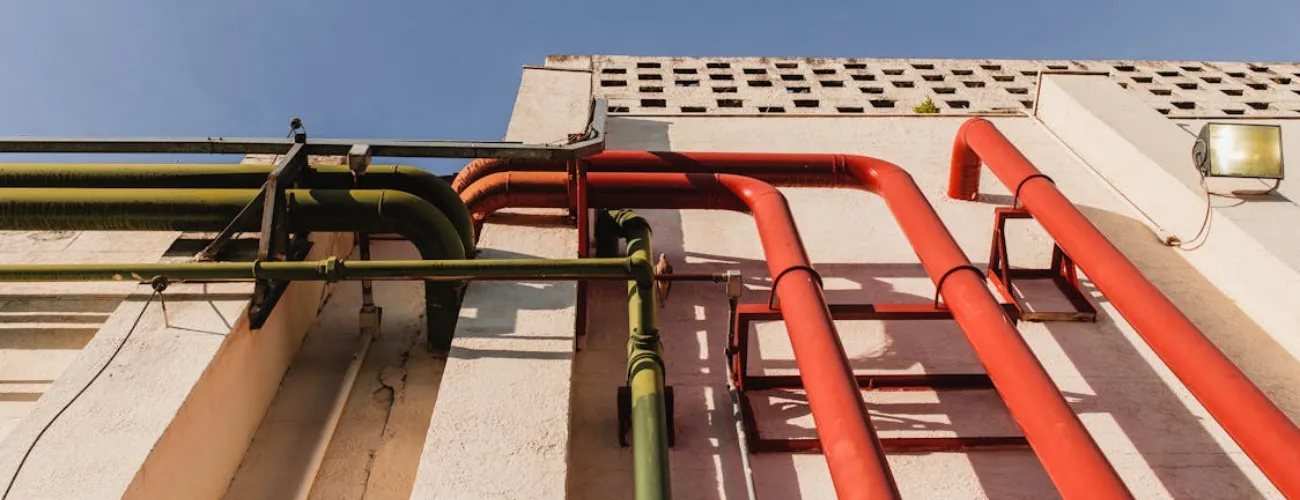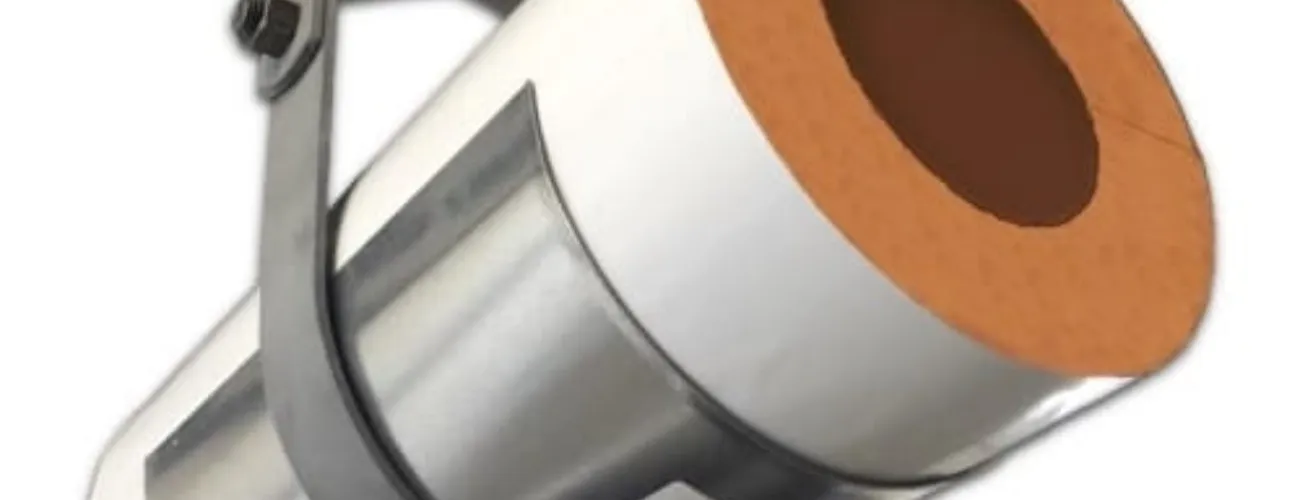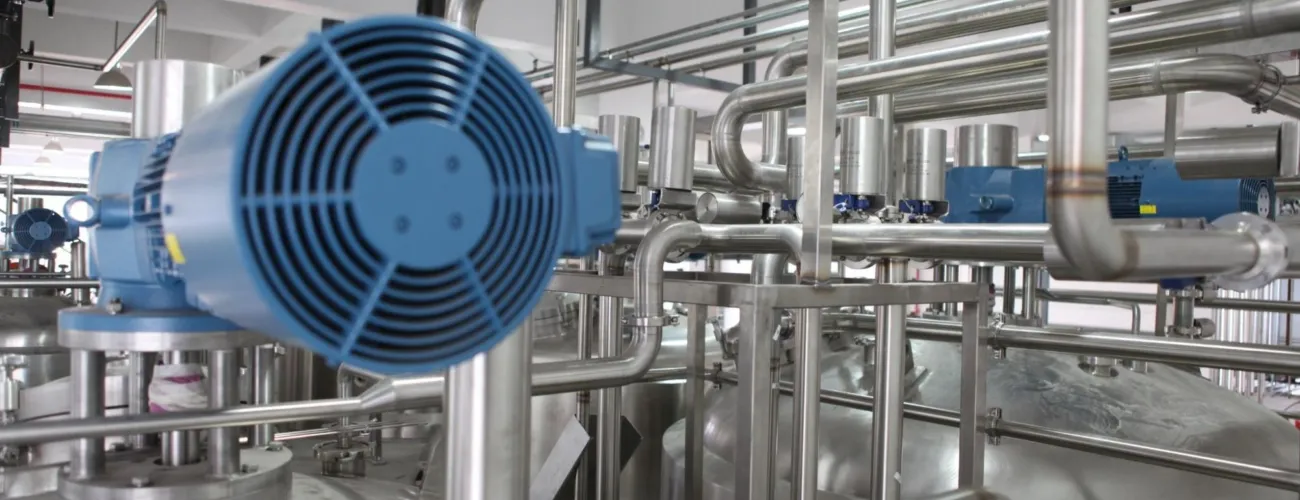Fire-Rated Pipe Insulation Explained
Heat Loss From Insulated Pipe: Managing and Optimizing Industrial Efficiency

Piping systems are crucial in modern industry by transporting necessary fluids throughout large facilities under various temperature conditions, but the success of these systems largely depends on how well they are insulated.
Insulated pipes are key for saving energy, keeping processes stable, and improving safety by controlling how much heat is exchanged between the pipes and their surroundings.
This article looks into the important features of piping systems, including how they minimize heat loss from an insulated pipe, what materials and methods improve insulated pipe performance, and the impact insulated pipes have on different industrial uses.
Understanding the Role of Insulated Pipes in Industry
Insulated pipes are essential in many industries to keep things running safely and efficiently. In fields like energy production, manufacturing, and chemical processing, controlling the temperature of fluids precisely is crucial:
- Good insulation helps reduce heat loss, saves energy, and prevents dangerous situations caused by big temperature changes.
- Advancements in insulation technology enable more precise temperature control and increase operational efficiency across various systems.
- Properly insulated pipes also mitigate the risks associated with frost heave and condensation for uninterrupted process flows and to maintain structural integrity.
By using advanced insulation materials and new methods, industries can greatly reduce heat loss, to make energy use more efficient and to improve environmental sustainability.
Factors That Influence Heat Loss From an Insulated Pipe
Although pipes are insulated and, thus, operate efficiently, there are a number of ways insulated pipes can lose heat. Some examples include:
Material and Construction
The choice of pipe material and pipe construction significantly influences the effectiveness of the pipe insulation.
Steel and copper, while durable, conduct heat and require robust insulation to prevent energy loss. The thickness of the pipe's diameter and wall thickness play a role in how well insulation performs under different operational conditions.
Type of Insulation
The type of insulation used is a critical factor in minimizing heat loss and enhancing the efficiency of industrial processes.
Mineral Wool
Often used in high-temperature settings, mineral wool insulation is renowned for its fire resistance and sound absorption capabilities. It is particularly beneficial in industries where fire safety is paramount and operational noise is a concern. Its robust nature makes it suitable for environments that experience high mechanical stresses or vibrations.
Fiberglass
Known for its versatility and thermal efficiency, fiberglass is commonly applied in both commercial and industrial settings. It's effective in reducing heat transfer due to its low thermal conductivity, which makes it ideal for moderate to high temperature applications. Additionally, fiberglass is resistant to moisture, which helps prevent issues like mold growth and insulation degradation in humid environments.
Phenolic Foam
This type of insulation offers superior thermal efficiency with a lower thickness compared to other materials. Phenolic foam is particularly effective in space-constrained applications where maximum insulation value is needed without the bulk of traditional materials. It also exhibits excellent fire and smoke performance, which makes it a safe choice for a wide range of industrial applications.
Polyurethane Foam
Known for its excellent insulative properties at lower thicknesses, polyurethane foam is used in both cold and hot applications. It provides high resistance to heat flow and is often used in refrigeration systems or pipelines carrying hot oils. Its application is also beneficial in environments where chemical resistance and waterproofing are necessary.
Calcium Silicate
This material is primarily used in high-temperature industrial applications, such as pipe insulation for steam lines. Calcium silicate offers not only good insulation properties, but also exceptional structural strength, which protects against physical damage and provides long-term reliability in harsh industrial environments.
Looking into the various insulation materials highlights how complex and important it is to choose the right insulation for industrial piping systems. It's crucial for improving efficiency, safety, and sustainability in industrial operations.
Environmental Conditions
External environmental factors such as ambient temperature, humidity, and exposure to chemicals or UV light can degrade insulation materials over time that reduces their effectiveness. Properly choosing and installing insulation that can withstand specific environmental conditions is vital for long-term energy efficiency and protection.
Consequences of Inadequate Pipe Insulation
Inadequate insulation in industrial piping systems can lead to significant operational disruptions and compliance issues. Below are the key impacts:
Operational and Economic Impact
Increased Operational Costs: Elevated energy use from heat loss leads to higher operational expenses.
Energy Inefficiencies: Inefficient insulation results in excess carbon emissions, which risks non-compliance with environmental regulations.
Equipment Damage: Thermal stress can cause premature equipment wear and failures.
Quality and Safety Concerns
Process Quality: Temperature fluctuations can compromise the integrity of sensitive products and affect quality standards.
Safety Hazards: Temperature inconsistencies can create unstable conditions that can pose safety risks in processes involving chemicals.
Regulatory and Legal Implications
Compliance Issues: Non-adherence to thermal management standards may result in fines and compulsory operational shutdowns to address these issues.
Reputation Risk: Regulatory non-compliance can harm the reputation of businesses, especially in strictly regulated industries such as pharmaceuticals and food processing.
It is essential to maintain rigorous insulation practices to ensure operational efficiency, regulatory compliance, and safety in sensitive industrial settings.
Minimizing Heat Loss From an Insulated Pipe
One of the best ways to ensure that there is now heat loss from insulated pipes is by knowing how to minimize it from the start. Here’s what you can do:
Choosing the Right Insulation
The operational environment of the pipe system dictates the insulation material selection. For instance, high-temperature steam lines benefit from calcium silicate's thermal properties, whereas outdoor pipelines might better utilize EPDM rubber's resistance to environmental factors.
Installation Best Practices
Proper installation is essential to maximize the effectiveness of pipe insulation. Techniques such as ensuring tight seals at joints and avoiding thermal bridges are crucial. Professional installation also helps in fitting insulation correctly around complex pipe configurations, to ensure comprehensive coverage without gaps.
Integrating Buckaroos® Brackets and Supports for Enhanced Insulation Systems

Buckaroos® offers a variety of specialized pipe supports and brackets that play a crucial role in enhancing the insulation systems of industrial piping. These supports are designed to ensure the structural integrity and thermal efficiency of insulated pipes across various settings:
For example, the CoolDry™ line of supports, including options like Heavy Duty and Sliding Supports, are tailored for environments that experience significant temperature fluctuations.

They are constructed from materials such as Polyphen™ rigid phenolic foam, which is known for its superior insulation properties and durability against moisture and condensation.
Buckaroos® brackets are particularly effective in maintaining the alignment and performance of insulated pipes to prevent sagging and optimize the overall energy efficiency of the system.
By securely holding the insulation in place, they mitigate heat loss and enhance the longevity of the pipe insulation under diverse operational conditions.
Advanced Techniques and Best Practices
Technological advancements have introduced tools like insulated pipe heat loss calculators, which assist in designing more effective insulation systems by predicting heat loss and recommending optimal insulation thickness. Regular maintenance and inspections ensure that insulation remains in good condition and performs at its best to reduce energy consumption and operational costs.
Harnessing Technology and Expertise for Enhanced Performance with Buckaroos® Insulated Pipe Brackets
Buckaroos® is committed to providing top-tier insulation solutions, including pipe supports and advanced insulation materials, tailored to meet the diverse needs of modern industries. We offer a wide range of products and resources designed to optimize thermal efficiency in piping systems.
Contact us today for more information!

Carrie Powers
Carrie channels her passion for innovative solutions in the construction industry for Buckaroos. With a deep understanding of Buckaroos' leading insulated pipe support systems and insulation protection shields, Carrie ensures that building owners, engineers, and installers are well-equipped with the best tools and products. Her dedication to digital transformation and customer engagement helps Buckaroos maintain its reputation as a trusted resource for professional insulators across North America and Canada.
Featured articles
Industrial Pipe Hangers and Supports
Steam Pipe Insulation 101: Materials and Supports
8 Types of Pipe Supports and Their Features
Understanding Industrial Pipe Insulation and the Options




